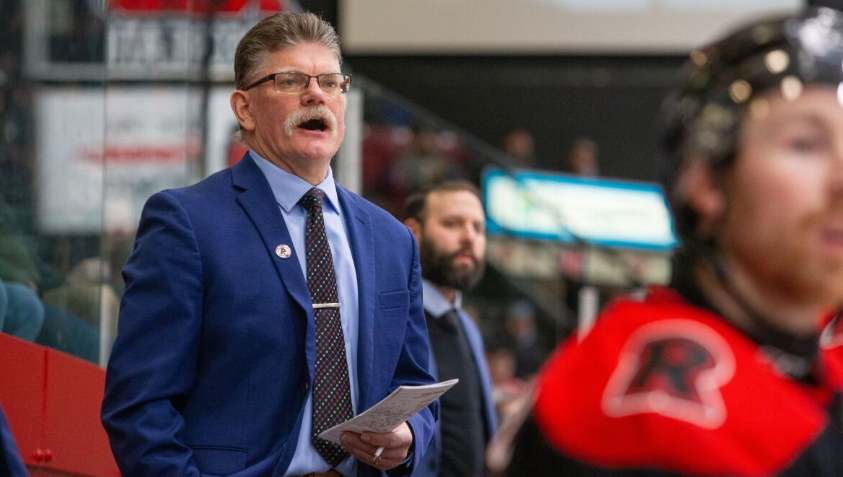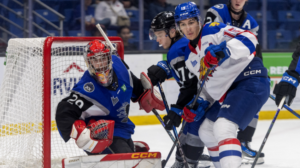
Heart of a Champion: Moncton Wildcats GM Taylor MacDougall Talks Team Pride

In recent years, the landscape of junior hockey in Canada has seen considerable change. With new regulations and evolving policies, the decision-making process for young players, particularly when it comes to choosing between the CHL (Canadian Hockey League) and the NCAA (National Collegiate Athletic Association), has become more complex. However, a bold statement from the General Manager of the Moncton Wildcats, Taylor MacDougall, alongside similar sentiments from Cam Russell, the General Manager of the Halifax Mooseheads, has provided a refreshing outlook for the future of junior hockey. Both Russell and MacDougall are optimistic about the shifting dynamics of player development, highlighting the long-term benefits that this change could bring to both the CHL and the NCAA.
For years, one of the most significant challenges facing young hockey players was the decision between pursuing an education while playing in the NCAA or jumping into the more competitive, fast-paced world of the CHL, often sacrificing the possibility of an NCAA scholarship. The conflict between these two leagues has historically led to a somewhat fragmented player pool, with some of the most talented athletes unsure of where to land for the best balance of education and professional opportunity. However, with new rules now allowing players to participate in both leagues without jeopardizing their eligibility for the NCAA, hockey in Canada is poised for a major boost in skill and overall player development.
A Win-Win for Everyone
For Cam Russell, the General Manager of the Halifax Mooseheads, the recent changes signal a bright future not just for his team, but for the entire Canadian Hockey League. Russell emphasizes that players will now have more freedom to pursue their dreams without the fear of losing opportunities in one league or another. As he sees it, this new flexibility will make the scouting and drafting process much smoother for teams, as they will be able to bring players to training camps and evaluate them without having to worry about eligibility restrictions.
“The nice thing is now you can bring players and they can go through a week or two of training camp, evaluate them, make a decision on them,” Russell explains. “I think it’s a win, win for everybody.” For Russell and the Mooseheads, this eliminates a significant hurdle in player recruitment, one that has previously restricted their ability to fully assess a potential recruit’s fit for the team. Now, the team can recruit from a broader talent pool, knowing that they are not going to be closing the door to a potential NCAA scholarship for any player they bring in.
This new development is not just beneficial for the teams in the CHL but also for the players themselves. Hockey players at the junior level are still at an age where they are weighing their options for the future, especially when it comes to balancing their athletic aspirations with the importance of a post-secondary education. With the increased opportunity to play at a higher level while still preserving their eligibility for an NCAA scholarship, young athletes no longer have to choose between competing in the CHL and pursuing their education.
Russell’s optimism about the shift in player development is shared by MacDougall, the General Manager of the Moncton Wildcats, who echoes similar sentiments. According to MacDougall, this change will make the league stronger and the recruitment process much more streamlined. His excitement lies not only in the greater flexibility for players but also in the potential for even more talent to flood into the CHL from across North America.
The Future of the CHL and Moncton Wildcats
The Moncton Wildcats have long been one of the most storied franchises in the CHL. Known for developing top-tier talent and fostering players who go on to have successful careers in the NHL, Moncton has established itself as one of the premier destinations for young players looking to make a name for themselves. MacDougall, who has been at the helm of the team for several years, is excited about the increased opportunity this change presents for both the Wildcats and the league as a whole.
“This just means that many more talented players are coming to Moncton,” MacDougall says, referring to the new rule changes that allow players to play in both the CHL and the NCAA without fear of losing their eligibility. With an eye towards building a team that remains competitive at the highest levels of junior hockey, MacDougall sees this as an opportunity to not only attract more players to Moncton but to also give the Wildcats an edge in terms of recruitment. The Moncton Wildcats have a rich history of attracting American talent, and with the lifting of previous restrictions, MacDougall believes that the team will only further strengthen its reputation as a top destination for U.S. players who are looking to play in the CHL.
“We’ve had a lot of success with U.S. players over the years,” MacDougall says, mentioning former Wildcats like Keith Yandle, who enjoyed a long NHL career, and current Vancouver Canucks forward Conor Garland. Both players were born in the United States but chose to play in Moncton, where they developed into elite talents. MacDougall is confident that the Wildcats’ longstanding tradition of supporting players on and off the ice, especially with their post-secondary education options, will continue to attract American players to the team.
In fact, MacDougall believes that the new policy will make it easier to recruit these players, as they will no longer have to make the tough decision between playing for the CHL or attending an NCAA school. With an influx of talent, Moncton will likely become an even more attractive destination for players looking to maximize their potential while still keeping their future educational options open.
As MacDougall explains, this shift isn’t just about attracting American players, either. It’s about broadening the team’s scope of recruitment across the board, pulling in talent from not only the United States but also from across Canada and even overseas. The flexibility between the two leagues offers a new horizon for young hockey players, one that gives them more freedom to explore their options without being locked into one path or another. This is a significant advantage for the Wildcats, as it allows them to continue attracting the best and brightest talent from all corners of the hockey world.
Navigating Player Transfers
Despite the excitement surrounding this newfound flexibility, MacDougall is realistic about the potential challenges the system may face. One of the concerns often raised in discussions around this issue is how player transfers will work, particularly when it comes to the logistical and procedural aspects of moving players between the two leagues. However, MacDougall is confident that the transition between the CHL and NCAA will not cause any significant issues.
“The average age of your freshman in the NCAA, I think, is around 20 or 21 years old,” he says. Given this, MacDougall believes that the Wildcats can take a pragmatic approach in working with the NCAA system to ensure that the players have the best opportunities to develop, whether they are considering a future in the NCAA or the CHL. It’s a fine balance to strike, but MacDougall is confident that his organization’s track record of player development, particularly in terms of supporting athletes’ academic pursuits, will enable them to navigate any challenges that may arise.
Ultimately, the goal for both Russell and MacDougall is simple: they want to provide players with the best possible opportunities to grow both on and off the ice. The changes in the player eligibility rules represent a significant step forward for junior hockey, and both GMs agree that it will only make the entire system stronger, with more talented players having access to more opportunities than ever before.
The bold statements from both Cam Russell and Taylor MacDougall reflect a shared optimism about the future of junior hockey in Canada. With players no longer needing to choose between competing in the CHL or pursuing an NCAA education, the development process has become more flexible, more inclusive, and more focused on long-term success for athletes. The CHL and NCAA can now work together to create a more seamless pathway for players, ultimately benefiting not only the teams and leagues but also the players themselves, who will have greater freedom to pursue their dreams and make the most of their hockey careers. As Russell and MacDougall look to the future, it’s clear that the next generation of hockey talent will have more opportunities than ever before to succeed both on the ice and in the classroom.

Leave a Reply